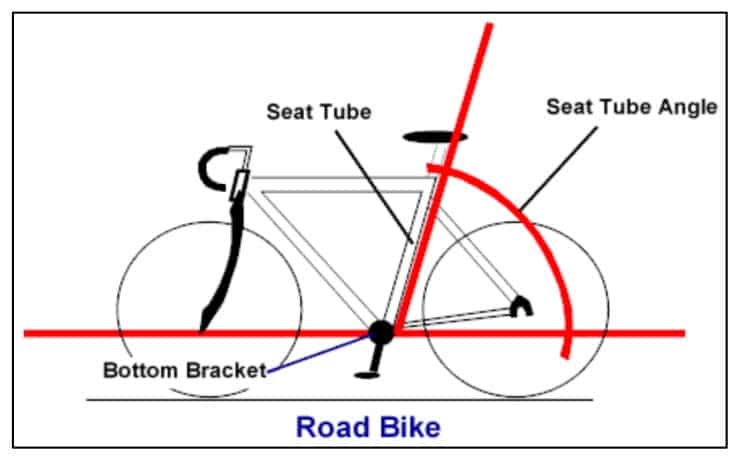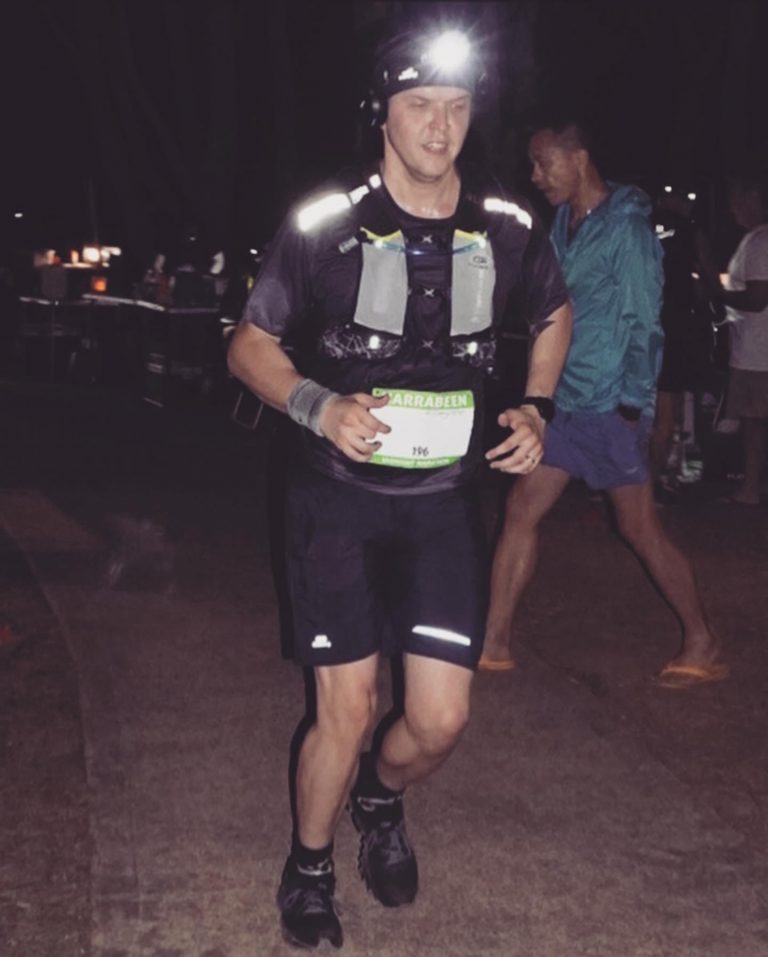If there’s a piece of unsolicited advice that I can give if you’re eyeing to join a triathlon (and this is also applicable to veterans): it’s that you need to prepare for it 110%. And even with more than enough preparation, nothing can take away the fact that it will be one of the hardest and most challenging things you’ll do.
I’ve had my share of positive and negative experiences in my years of joining and training for marathons and triathlons in half ironmans. One aspect that I think will make an impact, in your performance training and the actual race itself, is having the right equipment. Besides your body as your engine, in a triathlon, you’d need a reliable road bike.
A road bike is the perfect blend of balance, aerodynamics, support, and handling. It’s intended to perform very well on any kind of surface. And are usually the bike of choice for many triathletes (including myself). Below is a stab at some of the best road bikes you can pick up for triathlon, and not at the cost of an arm and leg.
Best Road Bikes For Triathlon Compared and Reviewed
| Image | Name | Brand | Check Price |
|---|---|---|---|
Top | Eurobike EUR XC550 Road Bike | Eurobike | Check Price on Amazon |
 | Vilano Diverse 3.0 Performance Hybrid Road Bike | Vilano | Check Price on Amazon |
 | Tommaso Imola Endurance Aluminum Road Bike | Tommaso | Check Price on Amazon |
 | SAVADECK Carbon Road Bike Windwar5.0 | SAVADECK | Check Price on Amazon |
 | Schwinn Fastback Carbon Road Bike | Schwinn | Check Price on Amazon |
#1 - Eurobike EUR XC550 Road Bike

The XC550 may be a fair testament to that. This bike is made of a sturdy and steel frame that speaks of its durability despite not being as light as carbon and aluminum frames. It has an iron casting handlebar for an easy-to-control, and relaxed ride.
One of the things that determine the performance of a bike is its gear system and speed ranges. I like how the XC550 comes with a 21-speed Shimano shifting system, with Shimano TX-30 shifters and Shimano A050 21-speed gear. Besides the fact that this is rare to find in other bikes, even high-end ones, this will also provide you with a lot of adjustment room when you control your speed.
The aluminum brakes and 160-diameter steel discs contribute to the lightness of the bike and the look of it. As a fan of bigger wheels, I like how this is equipped with wider ones that will allow you to use it on different terrains.
It’s also equipped with an ergonomic saddle seat and handlebars both adjustable for your most comfortable riding position— a critical component that will affect your riding performance. Most buyers used this bike to train for their triathlons but have expressed that assembly was quite hard for them.
PROS
- Durable
- 21-shifting gear system
- Includes Shimano parts
CONS
- Hard to assemble
- Not for advanced riders
#2 - Vilano Diverse 3.0 Performance Hybrid Road Bike

The Diverse 3.0 is the hybrid entry for this article. At a great price range, the frame is constructed with a lightweight 6160 aluminum frame. These come at 53 and 57 inches that will fit a good 5 feet 5 inches tall to about 6 feet tall.
Equipped with a Shimano EF 51 ⅜ Speed Shifter, this will provide you sufficient control and options of 24 gears, including the disc brakes. With this addition, I’m pretty sure that on any terrain you’ll be able to ride flawlessly and keep your focus on the road.
Speaking of brakes, I’m comforted by the fact that this comes equipped with Shimano disc brakes that will ensure great stopping power even in both wet or dry conditions.
The 3.0 has flat upright handlebars and a seat that can be adjusted to your appropriate height. You’ll also find a nice bottle mount at the back of the seating area for more convenience.
At a very competitive price range, this bike is a bike for all terrains, which makes it perfect for your triathlon training and during the competition. While it is not as lightweight as I prefer, it is still something that you can consider.
PROS
- Reliable brakes
- Aluminum frame
- Can be used on most terrains
CONS
- Recommended for taller people
- Some users say the seat is narrow
- No features to support aerodynamics
#3 - Tommaso Imola Endurance Aluminum Road Bike

First and foremost, it is constructed with a lightweight 6061 aluminum frame that will provide minimum drag even at higher speed rates. The steel forks should be able to absorb most of the vibration when riding on different terrains. The Tommaso Corsa TC20 rims are a great addition to making this bike an all-around one.
While I haven’t tried it myself, a lot of buyers rave about how this entry-level bike is equipped with a full Shimano R2000 Claris groupset. This set is intended to give you a smoother and more flawless ride as it has been designed to work together.
You’ll be able to easily change your gears with the shifters while the brakes’ will be able to put you to a full stop at the shortest possible time. Personally, this is particularly important as it will help prevent accidents.
The 24 shifting gears are more than enough to get you anywhere you want comfortably. Usually, road biking will take you to different terrains and having a bike that is fully equipped to tackle hilly, wet, and dry roads. The frame also has various drilling points that will allow you to add mudguards or fenders and other carriers that will give you a more complete riding experience.
PROS
- Lightweight
- Superb shifting and braking systems with R2000 Shimano
CONS
- Some found the pedals needed replacing
- Lacks aerodynamic features
#4 - SAVADECK Carbon Road Bike Windwar 5.0

By 2014, they’ve invested in their own industrial bike park to cater the needs of their ever-growing market.
The first wow-er of this bike for me is how it is fully constructed with carbon fiber. The frame only weighs in at about 21 pounds. That’s a feature that’s going to be super helpful if you’re going to use this in your triathlon competition.
Additionally, this bike is intended to support aerodynamics as it was designed in a wind tunnel to minimize drag. It has the Continental Ultra Sport II (C304 SL) Wire 700x25C tire that has great traction power and doesn’t add any substantial weight to the bike.
For the shifters, it has 27 shifting options and is backed by a full Shimano 105 7000 set. You can also opt for a hydraulic or mechanical disc brake for this bike. Initially, this comes with a mechanical one, which is equally strong in terms of stopping power.
While the brand may struggle on having their bikes known with so many more expensive and high end bikes in the market, it has made a solid name for itself as the more affordable carbon fiber option.
PROS
- Full carbon fiber body
- Made for competitions
- Nice wheel set
CONS
- Not for bigger riders
- Parts are hard to find as claimed by most user reviews
#5 - Schwinn Fastback Carbon Road Bike

Do not let Schwinn’s positioning as more of a casual rider bike fool you. The Fastback Carbon has seen many races including triathlons as shared by the many user reviews. This variant is also manufactured by the same owner of Cannondale.
The first thing that users noticed and caught my eye as well was how fast this bike is. Donning a full carbon frame with a 19-pound weight to boot, this bike will surely be a reliable ride especially if you’re trying to finish a race.
It has an 11-speed Shimano 105 drivetrain. For those who love to modify their rides, you’ll probably tweak a part here or there, in order to make it faster and lighter but I think it is fine on it’s own.
The carbon frame is very light and the geometry just adds to the sleek design. It comes with Alex Rims wheels and tires, which can probably use an upgrade but will be sufficient enough on its own anyway. If you want clipless pedals, you need to buy that on the side as well, as its stock comes only with standard ones.
Most reviews say they simply use as they received it and worked perfectly fine for them. Some have even ridden it in triathlon and completed on best time.
PROS
- Lightweight
- Great for races
- Full carbon frame
CONS
- Good for a competitive biker but lacks some features
My Number One Pick
- 700C Road bike with 21 Speed Shifting system and Dual Disc brake.49 cm and 54 cm frame size matches different group.Size of 49 cm Fits for 5’5”to 57 .Size of 54 cm Fits up for 5’8” to 6
- This bicycle arrives with 85% assembled. You need to install the front wheel, pedals, handlebar, seat and air up the tires. We do not supply any bicycle assembly service for online pays or for free.
- Suggested reference group: 49 cm Frame fits 55 ~57 ,54 cm Frame fits 58 ~6
Difference Between A Road Bike and A Triathlon Bike
Yes, road bikes aren’t actually fully intended for triathlons. These will help you finish your race, but it will not help you finish it faster.
There are variants that serve this purpose. It is critical to understand where the difference lies as it will help you determine compromises in your purchase when you do decide to buy a bike for triathlons.
The main difference between a triathlon and a road bike is in its frame. The geometry of the frame will have a minor difference in anyone’s eyes but it will make a huge impact on the riding experience and performance.
1. Triathlon bikes allow aerodynamic position, road bikes don’t
A triathlon bike allows you to sit in a more comfortable position while promoting aerodynamics. Because of the design of the frame, you’ll be seated in an elbow-rest style on the handlebars, making you smaller.
2. Triathlon bikes allow easier bike-run transition
Again, owing to it to the frame, when you sit on a triathlon bike, you are smaller, lower on the bike, and in a more aerodynamic upper body position. You’re basically putting all the pressure on your elbows.
With a standard road bike, your weight is more on the upper part of your body supported by your torso.
Now, imagine having to lift yourself from a position where you’re pulling your weight using your torso versus your elbows like sitting on a counter. It will be a lot easier obviously to stand up with your elbows already propped up, than use your torso, as if doing a push up.
3. Seat Tube Angle Difference
Another major differentiation is the angle of the seat tube. Typically, a triathlon bike is around 76 to 78 degrees while a road bike is around 73 to 74 degrees.

When a seat angle is higher, the gap between your thigh and torso is opened, allowing the pressure on the leg and lower back to lessen, which in turns allows you to breathe easier.
4. Shorter Tube Top
As aerodynamics is important to be faster especially in triathlons, a triathlon bike has a shorter tube top in order to allow the use of aero bars. Following that, lower head tubes are also put in place to allow the extra height of the aero bars This will allow the rider to sustain a low upper body position for a longer time.
Things To Consider When Buying A Road Bike For Triathlon
Road bikes look the same to a casual set of eyes, but as I’ve mentioned minute differences in the angles, height and frame can make a world of difference in your performance. Having said that, what should you consider when you want to buy a road bike for triathlons?
What kind of ride will you most often be using it for?
This should be the main question that you ask yourself. Are you aiming for 1st place in a triathlon? Are you aiming to beat your old time?
Your overall goal should greatly influence what you should look for in a bike. For those who are more of an all-out triathlete, then a tri bike would be better suited for you. However, if you’re doing your triathlons with other biking activities, you could probably go for a road bike.
Form And Frame Construction
On this aspect, you’ll get to know how an aluminum body differs from carbon and a steel one.
Aluminum – lightweight and durable on an affordable price range. While it is strong and stiff it doesn’t absorb vibrations very well.
Steel – provides durability; however, can be quite heavy and pricey
Titanium – strong, lightweight and combats carbon in comfortability. It is also corrosion-resistant. The fact that it’s very hard to make, adds up to its cost.
Carbon – used for higher-end bikes. This is the most lightweight of all bikes and the best in absorbing vibration.
While fork and frame need not to be of the same material, if you are opting for a lighter bike, then consider using carbon on both.
Groupset
Groupset determines the kind of transmission and brake system is provisioned to your bike. The most famous and most reliable groupset manufacturers are Shimano or SRA.
Each manufacturer usually has different levels or variants that will cater to each level of biker. For example, Shimano has Sora, Tiagra, 105, and so on.
Are you opting for disc brakes that are hydraulic or mechanical?
There are definitely pros and cons for both. Hydraulic brakes are more reliable even in wet, dry, and dirt conditions. Mechanical ones tend to give in and suffer in grimier conditions but are easier and cheaper to maintain.
Bike Size and Fit
Definitely, size and fit will affect your performance and longevity in your bike. For a simple size guide based on the length of the top tube for road bikes, here’s a table that you can refer to:
| Rider Height | Bike Top Tube Length | What size to choose |
| 5’0’’ – 5’3’’ | 49 – 50 cm | Extra Small |
| 5’3’’ – 5’6’’ | 51 – 53 cm | Small |
| 5’6’’ – 5’9’’ | 54 – 55 cm | Medium |
| 5’9’’ – 6’0’’ | 56 – 58 cm | Large |
| 6’0’’ – 6’3’’ | 58 – 60 cm | Extra Large |
| 6’3’’ – 6’6’’ | 61 – 63 cm | Extra Extra Large |
Frequently Asked Questions On Road Bikes For Triathlons
Q: I’m a bit on the heavy size and large frame, what bike frame shall I choose?
A: While you can choose any of the type frames, I recommend that you go for steel or titanium. These materials are able to flex without breaking unlike carbon which has a higher tensile rate.
Q: Are road bikes more prone to flats?
A: Yes, as road bikes’ wheels are narrower, they are more likely to be flat especially on semi-rough terrain. These have thinner threads and require higher air pressure to carry the rider’s weight.
Conclusion
There are a lot of factors to consider when buying a bike. You’ll have to take into account the frame, your height and weight, the construction of your bike, and other parts.
It can be quite overwhelming. But it’s also quite interesting once you get a good understanding of the basic components. I hope I helped shed more light on the important aspects of road bikes that can help you make a better purchase.
Sources:
https://tridot.com/what-type-of-bike-do-i-really-need-for-triathlon/
https://www.eurobike.com/en/
https://www.vilanobikes.com/
https://triathlonmagazine.ca/feature/road-bike-or-tri-bike/
https://www.220triathlon.com/gear/bike/whats-the-difference-between-a-triathlon-bike-and-a-road-bike/

Marko Rakic is a trail runner and fitness enthusiast from Sydney, Australia. He is the lead writer for The Ultimate Primate and believes the best way to live a happy life is through constantly challenging yourself.
